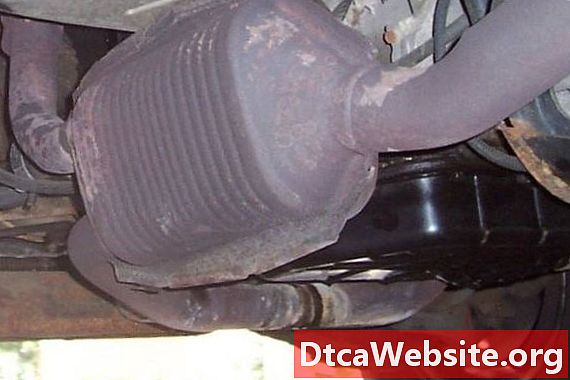
Contenu

Several emission control systems on your car engine help reduce the amount of poisonous gases that otherwise would be released into the atmosphere. In large quantities, hydrocarbons (HC), carbon monoxide (CO), oxide of nitrogen (NOx) and other combustion-engine pollutants cause great damage to the environment, humans, animals and plants if they are exposed to them. This is why it is important to keep emission control systems in your vehicle working properly.
Step 1
Check the air filter on the air cleaner system. This special paper element helps filter dirt, dust and other foreign particles from the air stream going into the engine. Replace the filter if clogged or after one year of use. Also, clean the air filter housing of dust and debris using a clean shop rag.
Step 2
Inspect the Positive Crankcase Ventilation (PCV) system. This system redirects blowby gases in the crankcase into the intake manifold to reduce air pollution and sludge buildup in the engine. Check the PCV valve and look for clogged, broken or missing hoses.
Step 3
Examine the Evaporative Emissions Control (EVAP) system. The EVAP prevents toxic fuel system vapor from going into the atmosphere. For the most part, this system requires very little maintenance, but you should inspect hoses, fittings and canister for possible damage. On some vehicle models, the canister is equipped with a filter that can be replaced if black or clogged.
Step 4
Go over the Exhaust Gas Recirculation (EGR) system. The system reduces NOx emissions produced during the combustion process when very high temperatures exist. The EGR allows exhaust gases to enter the intake system to reduce combustion temperature. Look for vacuum hoses damage, valve operation, restricted pipe and passages.
Step 5
Check the Air Injection System if your particular vehicle model is equipped with it. The system injects fresh air into the exhaust ports or catalytic converter to help consume unburned, or partially burned fuel, reducing HC and CO. Inspect for damaged hoses, lines, check valves and belt tension. Some air injection systems use a pump inlet filter that can be replaced, if necessary.
Inspect the catalytic converter and connecting pipes. The converter does not require maintenance, but exhaust pipes and connectors leading to the converter should be checked for leaks. If the catalytic converter in your vehicle has been in operation for 5 or more years, have it inspected to make sure it is still in good shape and not blocked. A clogged converter reduces engine power and causes overheat.
Tip
- To locate and identify components on your particular vehicle model, consult your vehicle service manual. You may buy one at most auto parts stores, or consult one free at your local public library.


